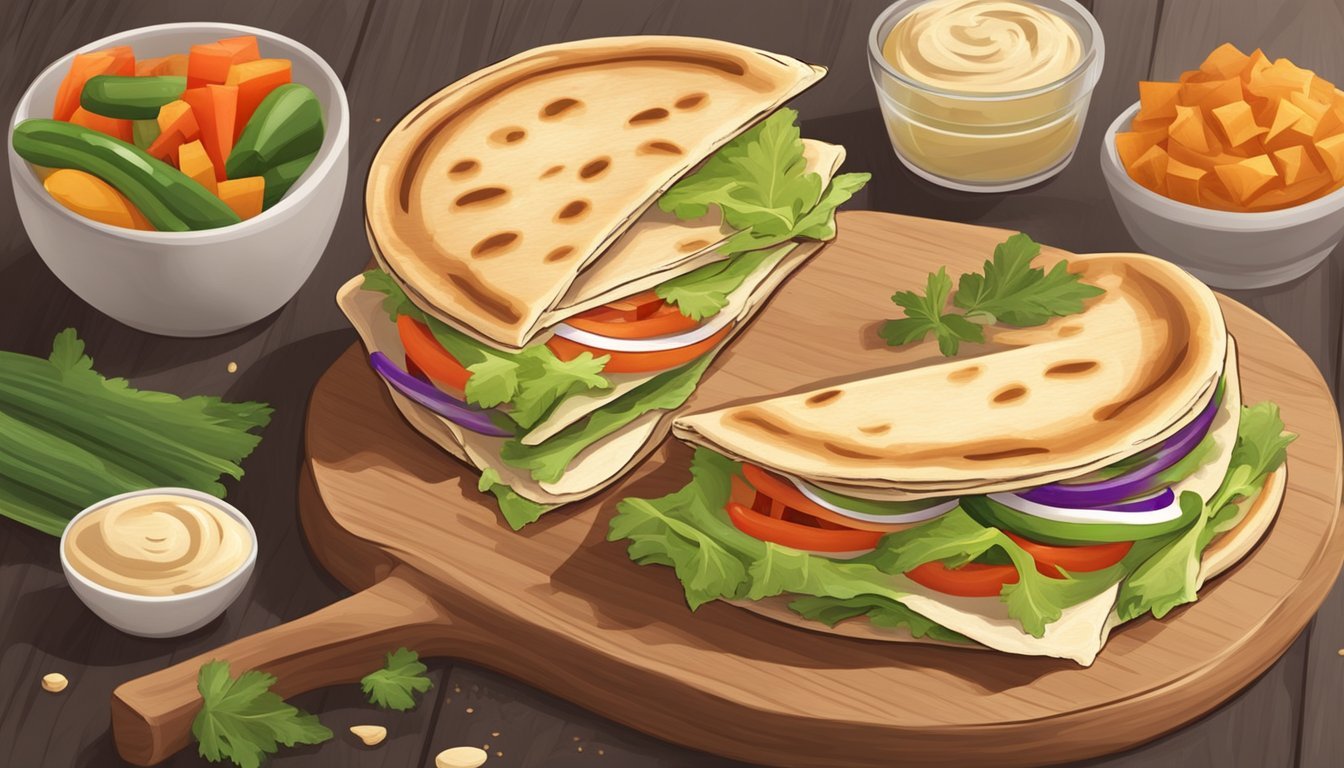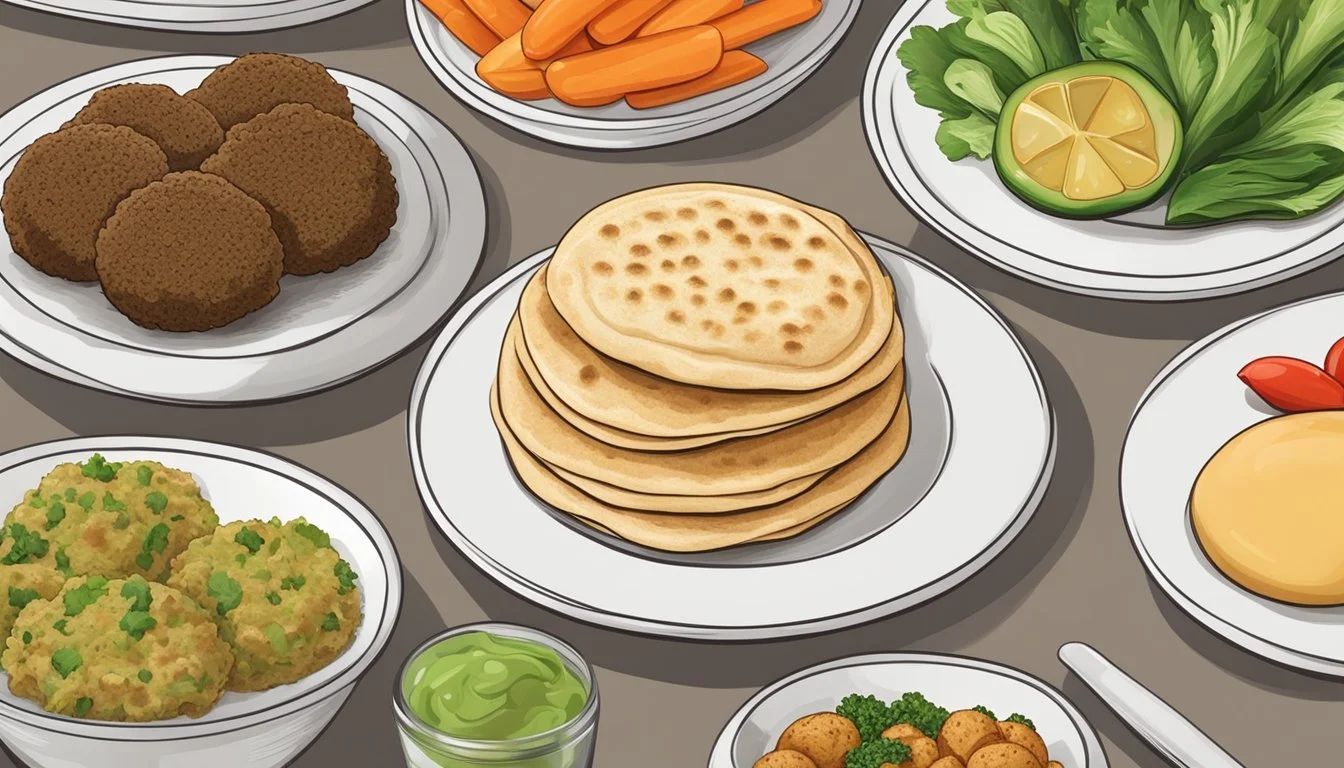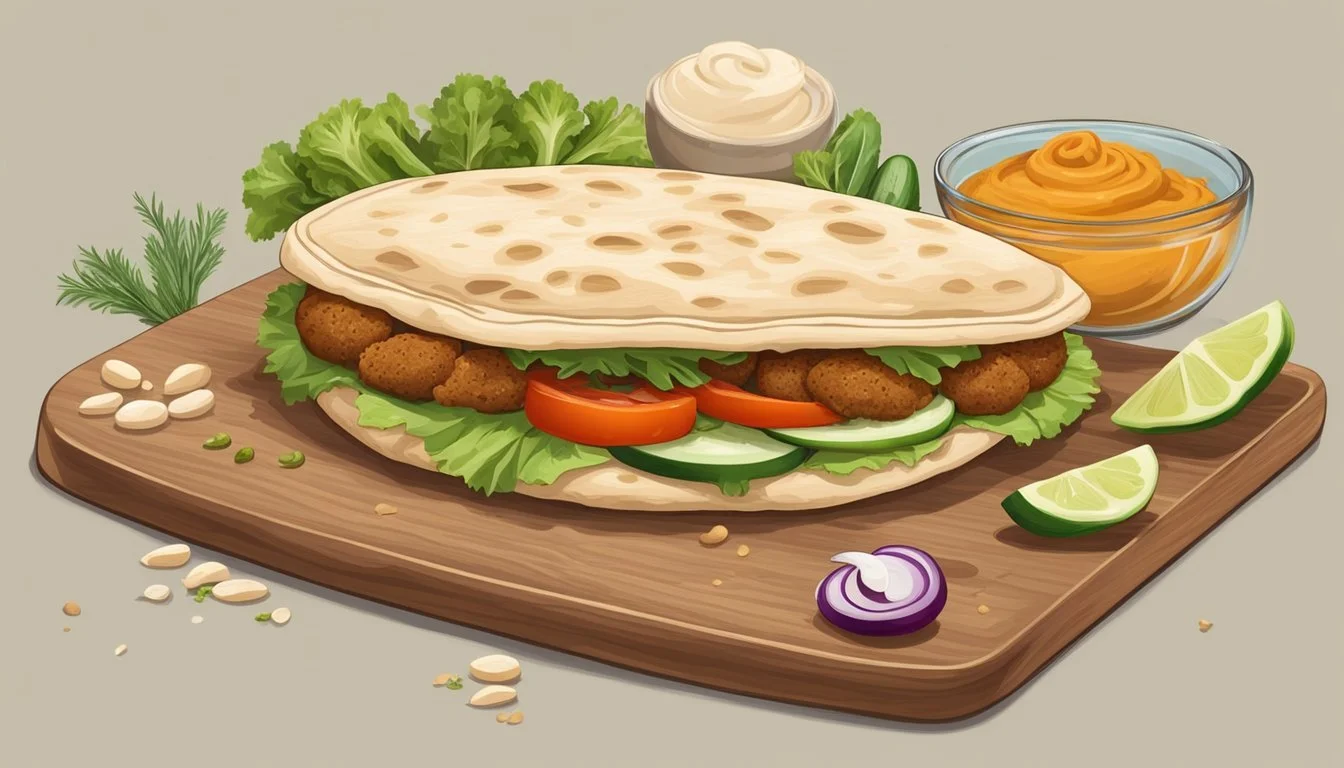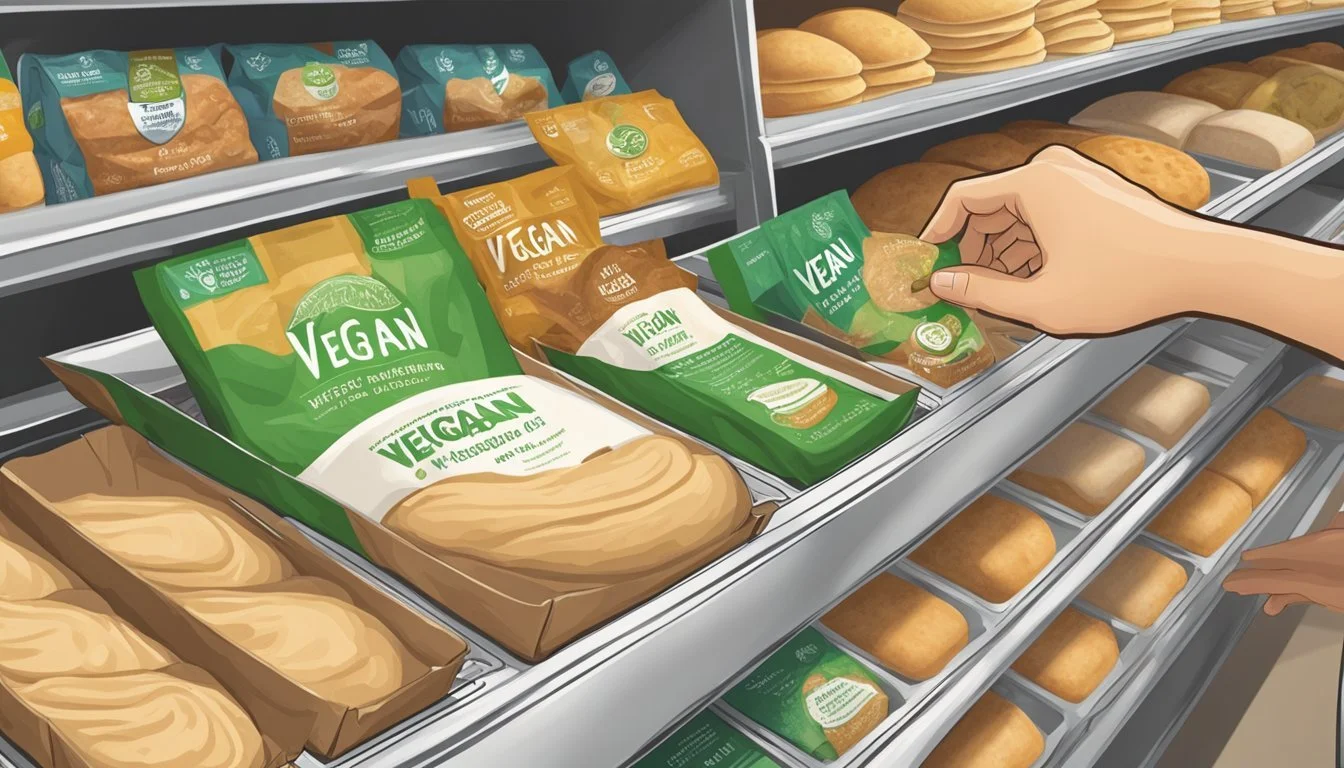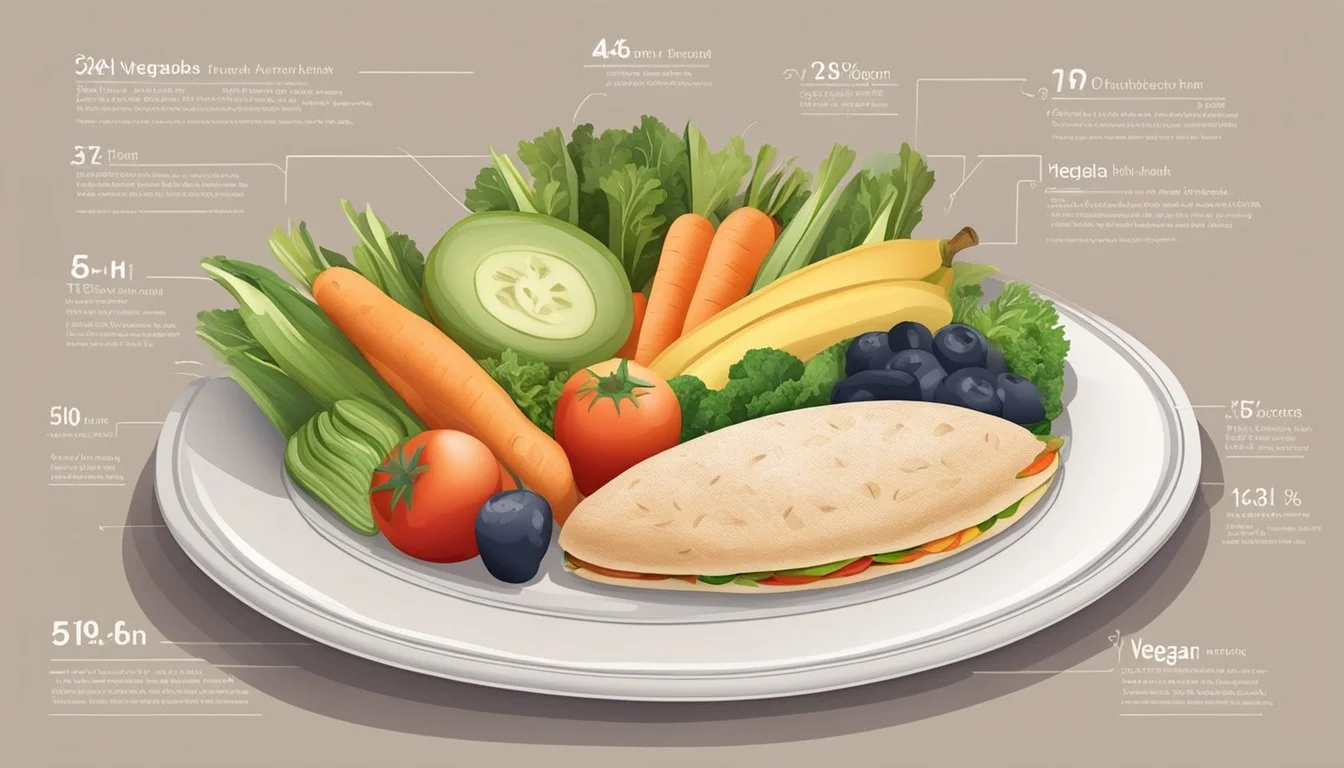Is Pita Bread Vegan?
Unveiling the Truth About This Popular Flatbread
Pita bread is often considered a staple in many Mediterranean and Middle Eastern cuisines, appreciated for its versatility and the way it perfectly complements a variety of dishes, from kebabs to hummus. The question of whether pita bread is vegan-friendly largely hinges on its ingredients, which traditionally include flour, water, yeast, and salt. Such a simple foundation suggests pita bread typically aligns with vegan dietary requirements, as it does not inherently require any animal-derived components.
Nonetheless, there are variations in how pita bread is made, and some recipes or store-bought options may add ingredients like dairy or honey for flavor or texture. For individuals following a vegan lifestyle, this means it's important to inspect product labels or inquire about the ingredients when purchasing from a bakery. The presence of certain additives, such as emulsifiers or dough conditioners, may also be of interest to vegans, although commonly used agents like guar gum or xanthan gum are plant-derived and generally considered vegan-friendly.
In summary, most traditional pita breads are suitable for a vegan diet, but attentiveness to ingredient lists is advised for those adhering strictly to vegan principles. It is this diligence that ensures the selection of truly vegan pita bread, allowing for an enjoyable, plant-based eating experience.
Understanding Pita Bread
In deciphering the nuances of pita bread, it's essential to recognize its roots, the basic composition, and the various types that cater to dietary restrictions and preferences.
History and Origin
Pita bread is a staple of Middle Eastern and Mediterranean cuisines, with a history that spans thousands of years. Its origins are often traced back to the region known as the Fertile Crescent, a historic area that includes modern-day countries like Iraq, Syria, Lebanon, and Egypt. This flatbread has been a fundamental part of the diet in the Middle East, where it serves as an accompaniment to a variety of dishes.
What Is Pita Bread?
At its core, pita bread is a type of leavened flatbread made from simple ingredients: flour, water, yeast, and salt. The bread's defining characteristic is the internal pocket that forms due to the steam that puffs up the dough during baking. Pita bread can be made using white, whole wheat flour, or a combination of the two, appealing to a range of dietary preferences.
Varieties of Pita
The traditional pita recipe has given rise to numerous variations, including gluten-free options that cater to those with celiac disease or gluten sensitivity. While classic pita pockets remain popular, versions made with multigrain and organic flours have also surfaced. Mediterranean and Middle Eastern versions may differ slightly in texture and taste, but all maintain the basic flatbread concept.
Components of Vegan Diets
In a vegan diet, individuals exclusively consume plant-based foods, avoiding all animal products and derivatives. The focus is on a diverse intake of fruits, vegetables, legumes, and whole grains to ensure a nutritionally balanced diet.
Defining Veganism
Veganism is a dietary and lifestyle choice that excludes all forms of animal exploitation and cruelty. This means no meat, dairy, eggs, or honey. Vegans commit to a plant-based diet that supports animal welfare and often environmental sustainability.
Common Vegan Ingredients
Vegan diets rely on a variety of plant-based ingredients. Here are some staples:
Legumes: sources of protein such as beans, lentils, chickpeas, and peas.
Vegetables: a wide range for essential vitamins and minerals.
Whole grains: such as quinoa, brown rice, and whole-wheat products for fiber and energy.
Nuts and seeds: for healthy fats and protein.
Vegan diets are rich in nutrients and can be diverse and flavorful with the correct combination of these ingredients.
Vegan Alternatives
Vegans have crafted numerous alternatives to animal products:
Animal Product Vegan Substitute Dairy Plant-based milks (almond, soy, oat) Cheese Vegan cheese, nutritional yeast Feta Cheese Vegan feta cheese made from tofu or almond flour Eggs Flax or chia seeds, applesauce, or commercial egg replacers
These alternatives allow vegans to enjoy a variety of dishes without compromising on ethics or taste.
Is Pita Bread Vegan?
Pita bread is generally considered vegan, but it is important to be aware of certain ingredients that may not align with a vegan diet.
Typical Ingredients in Pita Bread
Traditionally, pita bread consists of a straightforward mixture of flour, water, yeast, and salt. Some recipes may include sugar or olive oil for flavor and texture. These ingredients are all plant-based, making homemade pita bread typically vegan-friendly.
Flour: The base of pita bread.
Water: Hydrates the flour.
Yeast: Helps dough rise.
Salt: Adds flavor.
Occasionally, Sugar or Olive Oil: Used in some recipes for flavor and texture.
Non-Vegan Ingredients to Watch Out For
While traditional pita bread is vegan, certain store-bought versions might include non-vegan ingredients like milk, butter, honey, egg, and animal fats. These are often added for texture or flavor. Additionally, some additives or preservatives used in pita bread could be of concern.
Egg: Sometimes used for richness.
Milk, Butter, or Honey: Occasionally added for flavor.
Animal Fats: Rare but possible for texture.
Preservatives/Additives: Such as monoglycerides which can be animal-derived.
Identifying Vegan Pita Bread
When selecting store-bought pita bread, the ingredient list and labels are key factors to determine its vegan status. Look for a vegan certification as an assurance of vegan-friendly ingredients.
Ingredient List: The most reliable source for checking non-vegan ingredients.
Vegan Certification: A seal indicating no animal-derived ingredients are present.
Labels: Can offer quick insight, such as "contains milk" or similar allergen information.
By reviewing the ingredients and choosing products with clear vegan labeling, consumers can confidently enjoy vegan pita bread.
Making Vegan Pita Bread at Home
Creating vegan pita bread at home allows for full control over the ingredients ensuring the end product aligns with vegan dietary preferences. The process involves simple vegan ingredients and can yield delicious, warm pita bread that pairs well with a variety of dishes.
Steps to Prepare Vegan Pita Dough
The foundation of vegan pita bread is the dough, which involves a mixture of vegan-friendly ingredients. Here is a detailed list of steps to create the dough:
Ingredients:
2 cups all-purpose flour
2 cups whole wheat flour (optional for half of the flour for a healthier variant)
2 tsp active dry yeast
2 tsp sugar
1 ½ cups warm water (110°F - 115°F)
1 tsp salt
Combining Ingredients:
In a large bowl, dissolve the active dry yeast and sugar in 1 cup of warm water.
Wait for the mixture to become frothy, indicating that the yeast is active.
Add both types of flour and salt to the yeast mixture. Gradually mix in an additional ½ cup of warm water as needed to form a tacky dough.
Kneading:
Transfer the dough to a floured surface and knead for approximately 10 minutes until the dough is smooth and elastic.
Place the kneaded dough in a clean, oiled bowl, and cover it with a clean kitchen towel. Allow it to rise for about 1 hour or until it doubles in size.
Baking Techniques
Achieving the perfect pita requires specific baking techniques:
Preheating:
Preheat your oven to a high temperature (usually around 475°F to 500°F) with a baking sheet or cast-iron skillet inside.
Shaping:
Once the dough has risen, divide it into balls and roll each one into a thin, even circle.
Baking:
Place the dough circles onto the preheated surface in the oven.
Bake each pita for 2-3 minutes until they puff up, which is caused by steam forming inside the dough.
Flip the pita and bake for an additional 1-2 minutes to achieve an even color.
Storing and Freezing Homemade Pita
Preserving homemade pita bread ensures its freshness for later consumption:
Cooling:
Let the baked pita bread cool completely before storing to prevent moisture build-up.
Storing:
Store the cooled pita bread in a sealed container with parchment paper between each pita, and keep them at room temperature for up to a few days.
Freezing:
To freeze, wrap the pita bread individually in plastic wrap and then place them in a freezer bag.
The leftover pita bread can be frozen for up to 3 months and reheated in an oven or toaster for later use.
Pita Bread in Mediterranean Cuisine
Pita bread is a versatile staple in Mediterranean cuisine, commonly paired with a variety of dishes, including vegan options. It serves as a cornerstone for numerous traditional meals and enjoys a reputation for its compatibility with a range of dietary preferences.
Popular Mediterranean Dishes with Pita
Falafel: Pita bread is often stuffed with falafel, deep-fried chickpea balls, to create a fulfilling sandwich. Greek Salad: A blend of tomatoes, cucumbers, onions, olives, and feta cheese, Greek salad may be enjoyed with a side of warm pita. Hummus: This creamy chickpea dip is traditionally scooped with torn pieces of pita.
Pairing Pita with Plant-Based Options
Pita Chips: Baked or fried pita slices serve as a crunchy vegan-friendly snack or appetizer. They can be enjoyed with a variety of dips. Vegan Pizza: Pita bread provides a quick and easy base for vegan pizza; one can top it with plant-based cheese and vegetables for a simple meal.
Buying Vegan Pita Bread
When looking for vegan pita bread, consumers should pay close attention to labels, seek out certain certifications, and be aware of non-vegan additives that might be present in commercial pita varieties.
Reading Labels and Certifications
Consumers should thoroughly examine the ingredients list to confirm that all components are plant-based. For assurance, one could look for the ** Vegan Certification** on the label, which indicates the product meets strict vegan guidelines. Below are examples of non-vegan ingredients often found in pita bread that should be avoided:
Mono and diglycerides: Often sourced from animal fats.
Lecithin: Commonly derived from soy, but can come from animal tissues.
Preservatives: Some preservatives may be animal-derived.
Finding Vegan Pita Brands
Identifying brands specializing in vegan pita bread can simplify shopping. Many brands now offer clear labeling or advertise their products as vegan. Consumers may find vegan pita bread options at health food stores or in the organic or specialized diet section of supermarkets.
Additives in Commercial Pita Bread
Commercial pita bread may contain various additives for texture or preservation. Here are commonly found additives and their vegan status:
Additive Vegan Status Notes Xanthan Gum Typically vegan A thickening agent from sugar fermentation. Guar Gum Vegan Extracted from guar beans. Cellulose Gum Vegan Made from plant cellulose.
Please note, while these additives are generally vegan, it is still advisable to check for the Vegan Certification, as manufacturing processes can vary.
Nutrition and Health Considerations
When considering vegan pita bread, it is essential to understand its nutritional profile, how it compares to non-vegan breads, and potential allergens or sensitivities involved.
Nutritional Profile of Pita Bread
Pita bread, particularly when made from whole wheat flour, can be a nutritious addition to the diet. Whole wheat pita bread provides a richer source of dietary fiber, proteins, and carbohydrates than white flour variants. A typical serving of pita bread contains the following nutrients, which contribute to its health benefits:
Carbohydrates: Essential for energy
Protein: Important for muscle repair and growth
Fats: Relatively low in fat, with any present fats being mostly unsaturated
Vegan pita variants, which exclude animal products, often maintain a similar nutritional profile to traditional pita bread as they are both primarily made from flour, water, yeast, and salt.
Comparing Vegan and Non-Vegan Breads
Comparing vegan pita bread with non-vegan breads like naan, which may contain dairy, the differences largely lie in the presence of animal products. Non-vegan breads might contain additional ingredients such as yogurt, milk, or butter, providing slightly more fats, particularly saturated fats, and potentially cholesterol. While the basic nutritional components, such as calories and macronutrients, might be somewhat comparable, vegan pita bread is often preferred by those avoiding animal-derived ingredients.
Allergies and Sensitivities
Individuals with specific dietary needs, including those with gluten sensitivities, must check the type of flour used. While traditional pita bread contains gluten due to the presence of wheat flour, gluten-free options are available that substitute wheat with alternative flour sources. Furthermore, those with allergies should verify if the pita bread is processed in a facility that handles allergens like nuts or soy, which could pose risks of cross-contamination.
Ethical and Environmental Considerations
When considering whether pita bread is vegan, it's important to assess both the direct impact on animal welfare and the broader environmental considerations associated with food production.
Animal Welfare and Veganism
Veganism is a lifestyle choice that excludes the use of animal products for ethical reasons related to animal welfare. Vegans avoid ingredients like gelatin, which is derived from animals, and seek foods that are plant-based. Pita bread, traditionally made from flour, water, yeast, and salt, aligns with vegan principles when it sticks to these plant-based ingredients. It's crucial to check labels for non-vegan additions like dairy, which can appear in forms such as casein or whey, and to be aware that some breads can contain fish derivatives or additives derived from animal sources, which would not be suitable for those adhering to strict vegan ethics that reject animal cruelty.
Sustainable Eating Practices
Choosing to consume plant-based products, including vegan pita bread, can be part of sustainable eating practices. The production of plant-based foods generally requires less water, land, and energy, leading to a lower carbon footprint compared to animal-derived foods. The impact of traditional farming practices on the environment is a concern for many vegans, who opt for plant-based diets not only for ethical considerations regarding animals but also for the sustainability of the planet. It's important, when selecting pita bread, to look for brands that prioritize sustainable production methods, such as organic farming or reduced packaging, enhancing the product's alignment with vegan and environmental values.
FAQs and Common Misconceptions
This section addresses frequent queries regarding pita bread's vegan status and corrects misconceptions about ingredients in vegan breads.
Answering Frequently Asked Questions
Q: What ingredients are typically used in making pita bread?
A: Pita bread usually contains simple, plant-based ingredients such as flour, water, yeast, and salt. This composition often makes it suitable for a vegan diet.
Q: Can pita bread contain non-vegan ingredients?
A: Yes, while traditional pita bread is vegan, it may sometimes include non-vegan ingredients like dairy products for added flavor or certain preservatives.
Q: Is store-bought pita bread always vegan?
A: Not always. Consumers should check the ingredient list on store-bought pita bread to ensure no animal-derived products are included. Vegan certification on the packaging can be a helpful indicator.
Q: Does vegan pita bread taste different from regular pita bread?
A: Vegan pita bread generally tastes very similar to regular pita bread, as the basic ingredients are the same, although some variations with additions like vegan feta cheese might have a distinct flavor.
Dispelling Myths about Vegan Bread
Myth: Vegan bread is not as flavorful as bread containing animal products.
Fact: Pita bread and other breads can be vegan and still flavorful. The use of various vegan ingredients and spices can result in delicious bread without the need for animal sources.
Myth: Vegan bread uses complicated and unnatural ingredients.
Fact: Vegan bread, including pita, typically utilizes common, natural ingredients. Any additional substances like thickeners—guar gum, cellulose gum, or xanthan gum—used in some recipes are plant-based and vegan-friendly.

